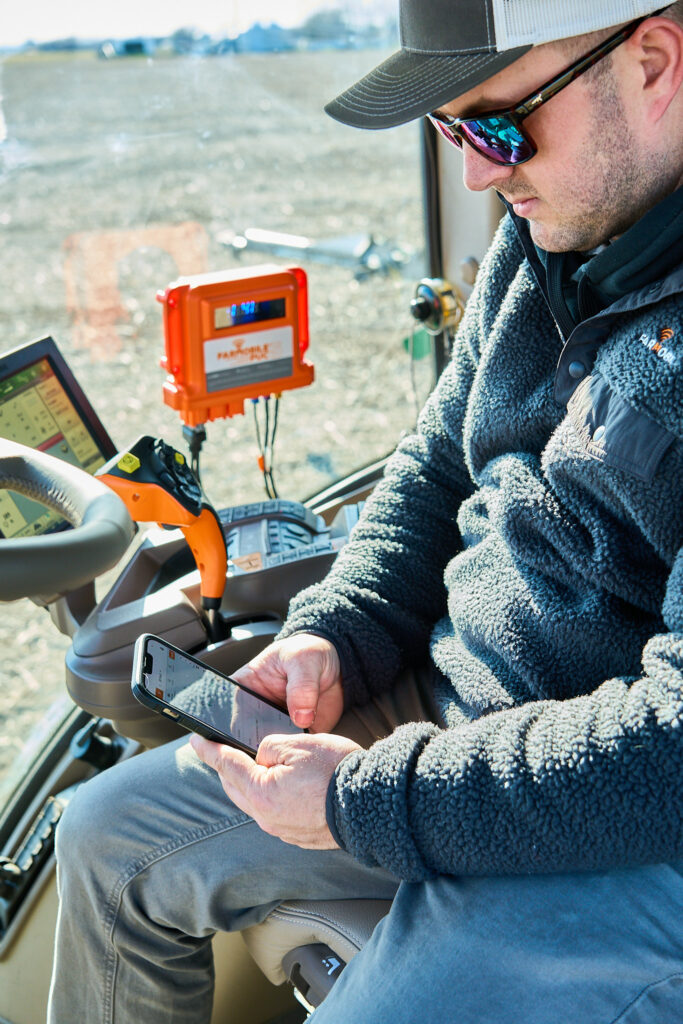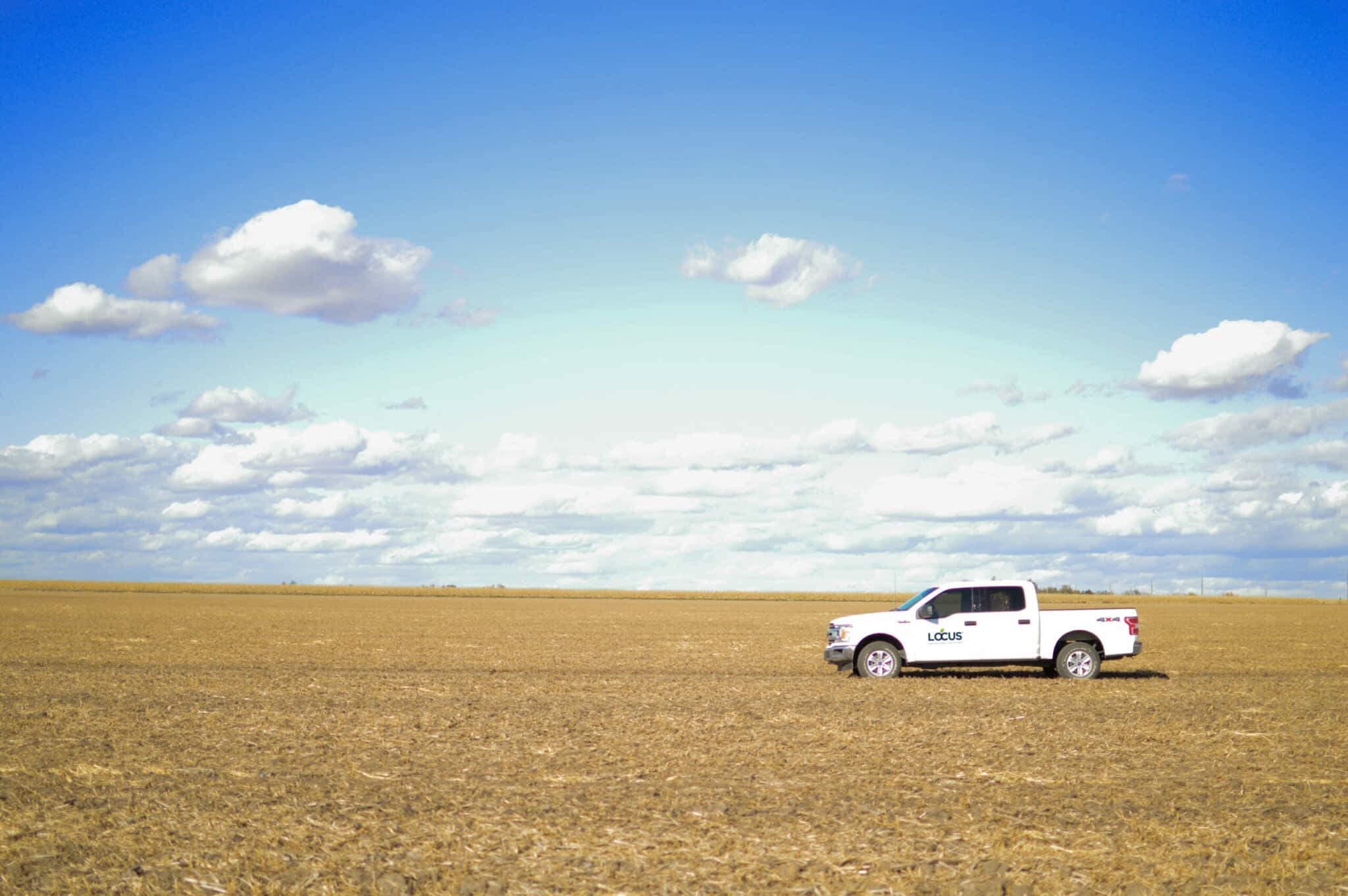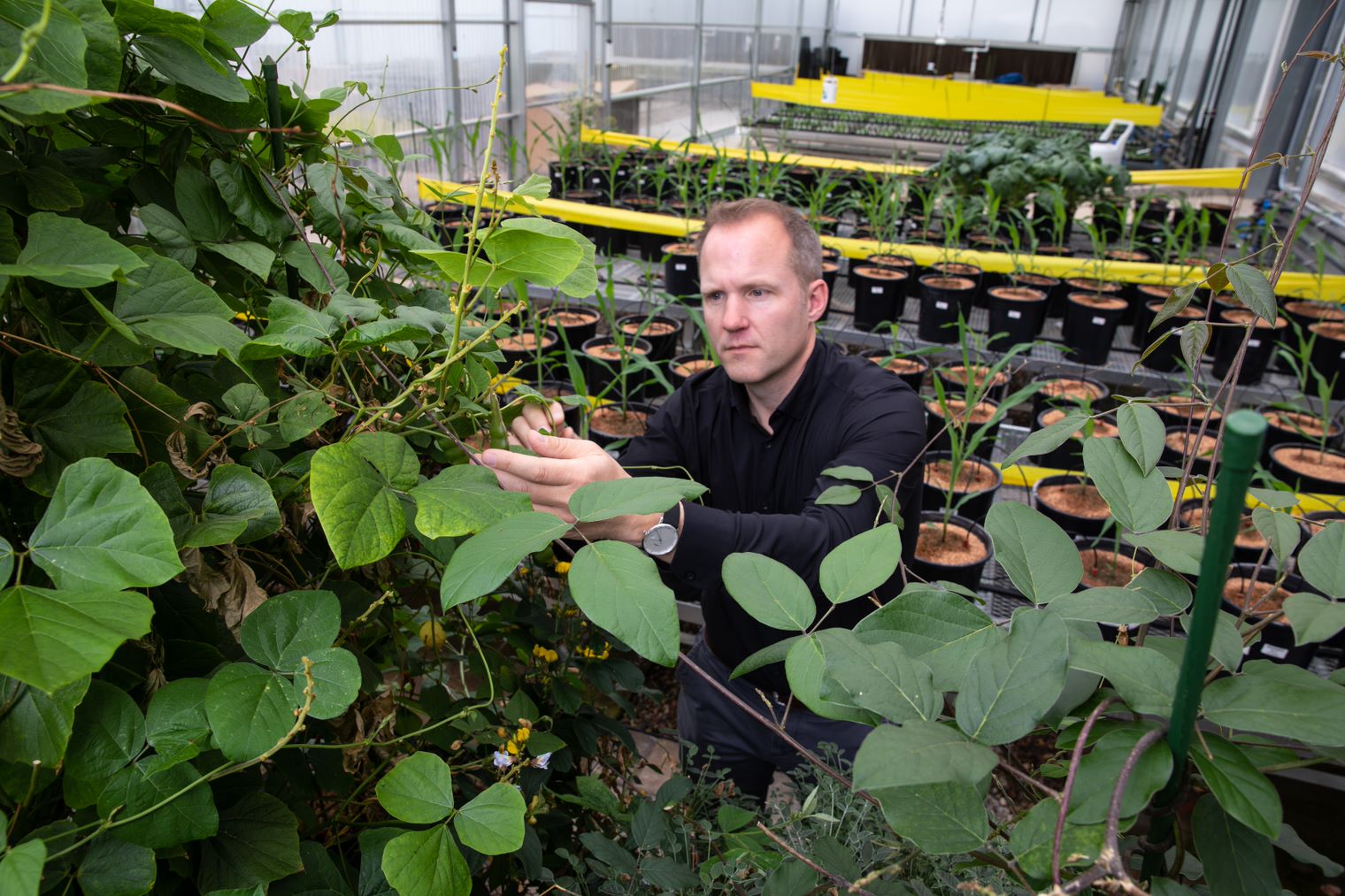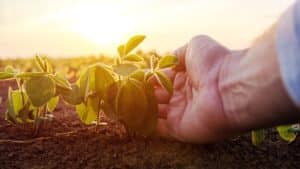Incentivized carbon market opportunities continue to grow for forward-thinking farmers willing to utilize their soil to its greatest potential.
In a world dedicated to making strides to reduce greenhouse gas emissions, carbon markets aren’t a new concept. And with net-zero commitments from some of the world’s largest corporations, opportunities for both those looking to purchase carbon credits will only continue to grow.
“The beginning and the end are well established,” says Locus Agricultural Solutions (Locus Ag) CEO Chad Pawlak of the relationship between capturing carbon and finding interested buyers for the verifiable captured tons.
“If you ask a farmer if they would like to participate in a carbon market, most are saying yes,” he says. “The interest is there. Likewise, when you go to a buyer and offer the opportunity to buy proven carbon credits, the answer is also yes. It’s the middle part that’s extremely challenging: getting through the reporting, ensuring the transparency, enabling the third-party audits to ensure accuracy and international acceptance.”
Today, two carbon capture markets dominate the space: voluntary and compliance. Both offer a marketplace for the creation and sale of sequestering greenhouse gasses from the atmosphere. However, as the name would indicate, voluntary markets transact on the voluntary creation and purchase of carbon capture in the soil rather than policy mandates.
To further complicate the space, there are two main types of credits within the voluntary space. Greenhouse gas avoidance credits reward growers for reducing their contribution to the amount of carbon dioxide being created, while carbon sequestration credits reward growers for measurable carbon sequestration.
Finding Value
For farmers, ranchers and specialty crop growers, finding the carbon market program that works best for their operation can be the most challenging part of the entire process. And with so many companies vying for acres today, finding the right fit in terms of deliverables and contractual obligation is arguably the most important aspect of the opportunity.
Both Agoro Carbon and Locus Ag’s CarbonNOW programs pay for carbon sequestered in the soil.
Agoro Carbon Alliance, formerly a subsidiary of parent fertilizer company Yara, leverages agronomic knowledge and partnerships to create market opportunities for the carbon the company’s enrolled acres sequestered.
“I don’t sell anything to producers, I can only buy carbon credits,” says Agoro Regional Sales Manager, Jerry Stephens. “Right now, the methodology for creating carbon credits is where Agoro is focused, and that methodology is a set of rules used to develop a carbon credit.”
Stephens explains that the methodology is developed by a carbon registry and sets standards that ensure buyers know what they are buying and growers know what they are creating.
“Just like standards put into place to ensure that everyone producing and purchasing number two corn knows what they are getting, methodologies used to develop carbon markets ensure that the grower knows what they are creating, and the buyer knows what they are buying,” he says.
The Agoro Carbon team is building carbon opportunities outside of the cropping sectors and began offering pasture and rangeland carbon sequestration contracts in October 2021.
“It wasn’t easy,” Stephens says of the methodology created to offer pasture and rangeland carbon sequestration contracts. “It’s a really difficult thing to do, but we had buyers for those types of credits and interest from ranchers and livestock producers.
“Carbon sequestration credit opportunities are there for companies willing to develop new methodologies that help growers monetize them,” says Stephens.
Taking a different approach, Locus Ag is also working to develop opportunities for growers to bolster their bottom line through the sequestration of carbon in the soils they farm.
“We are using technology to bring forward products that create healthier soils,” says Travis Kraft, director of U.S. row crops for Locus Ag. “CarbonNOW is built on the platform of utilizing the practices that are already in place within the industry and incorporating formulated Locus Ag products that have been proven to help drive the processes.”
The “A” Word
The 2017 U.S. Census of Agriculture reports that more than half of all U.S. cropland acres are already implementing no-till and other conservation tillage practices, of those acres, nearly half have instituted some type of cover cropping.
“That’s troublesome,” says Purdue University Associate Ag Economics Professor Carson Reeling. “If you think about where all of the corn and soybeans — a lot of the row crops — are produced in the U.S., about 94% of the ag land in those areas are already under those types of practices.”
It also creates barriers to capitalizing on carbon market opportunities for progressive growers who farm on the cutting edge of soil health management.
Additionality is a word that leaves an aftertaste in mouths of those affected. The term is used to define the “additional” practices a grower must implement to qualify for a carbon program.
Stephens says additionality and permanency are common contract terms used to define what new practices will be implemented and the amount of time the carbon will be monitored.
“We have to get into the practice of viewing carbon credits as another commodity,” he says. “I often ask growers, ‘Raise your hand if you’re growing oats this year.’ Very few hands raise, and when I ask why, the answer is always the same: There isn’t much of a market for oats right now. Carbon credits are a commodity, and we have to have buyers for a commodity. What we need to do is develop markets for legacy no-till and cover crop producers because we know that they are continuing to increase carbon tonnage in those fields.”

For Locus Ag, the proprietary technology offered through the company’s carbon-accelerating soil health probiotic product offering, creates the additionality needed for entry into the CarbonNOW program — a platform that Kraft says allows growers to both accelerate soil health, carbon capture and eligibility.
“The majority of row crop growers that started the enrollment process for CarbonNOW were eligible to join the program,” he says. “Our eligibility rate is much higher than other programs and a big differentiator in the opportunity for growers to monetize the carbon they are capturing.”
In late 2021, Locus Ag launched the first class of CarbonNOW carbon capture with the goal of signing-up 320,000 acres. Based on the rapid interest from growers eager to sign-up their acres, Locus announced in April that the CarbonNOW program would expand to include an additional 1 million acres.
For both Agoro Carbon Alliance and CarbonNOW programs, grower interest is there, with one common denominator: verifiable documentation built through ongoing measurement.
Data Tells the Story
“There’s such a loose usage of the word data in the industry today. If we think of what was considered data two decades ago, we were looking to the yield monitor for that information,” says Steve Cubbage, vice president of Data for Farmobile. “I’m not sure the definition of data has evolved and I think we are hearing that from the marketplace. From a technology standpoint, a lot of the data being asked for today, the industry hasn’t been able to provide at scale.”
Cubbage uses the example of a practice as seemingly simple as tillage, sharing while it is one of the most common field activities and entries to base-level carbon market opportunities, the practice isn’t well documented and rarely documented digitally.
“That is one of the challenges we have concentrated on at AGI Farmobile, filling the data gaps in field-level activities that are important to the marketplace,” Cubbage says.
Proof, verification, and traceability are the pillars that data builds. However, Cubbage says that while there is still some skepticism amongst farmers causing a cautious entry into carbon market opportunities, important data collection strategies are being missed that could prove costly in the future.
“Rather than looking at these practices and the data they generate from a carbon market perspective, in the long run it is going to be important in the marketplace to be able to tell a regenerative ag story for every acre and compare the value of the practices being implemented. Data tells that story and it provides a history of sustainability on every acre it is collected from.”
Carbon Credits are the “Extra”
Regardless of which program or company they represent, one thing every stakeholder in the industry can agree on is the agronomic benefits of implementing practices that capture carbon hold for an acre’s production potential.
Kraft says working in the carbon market space has provided him and his team an opportunity to have conversations about practices and perspective to help growers better understand biology and the essential role it plays in production agriculture.
“We work with Regen Labs for all of our soil testing, so we’re not just delivering a basic soil test. We’re able to talk to growers about the biology in their soil, how it’s working for them or against them and just really have a conversation about why things are happening the way they are,” he says. “You would be surprised, the next time we talk to a grower, a lot of them say, “I spent 20 hours in the tractor listening to every podcast I could find on regenerative agriculture and soil health.”
Want to read more? Check out:
Farmers Eye Evolving Carbon Markets, Seed Companies Take Note
Consumers Weigh in on the Carbon Market and Climate Change
Do Carbon Credits Work? It’s Complicated
The Wild West of Carbon Credits
Carbon Credits: Are They Really Worth It? – A Seed World Strategy Webinar












